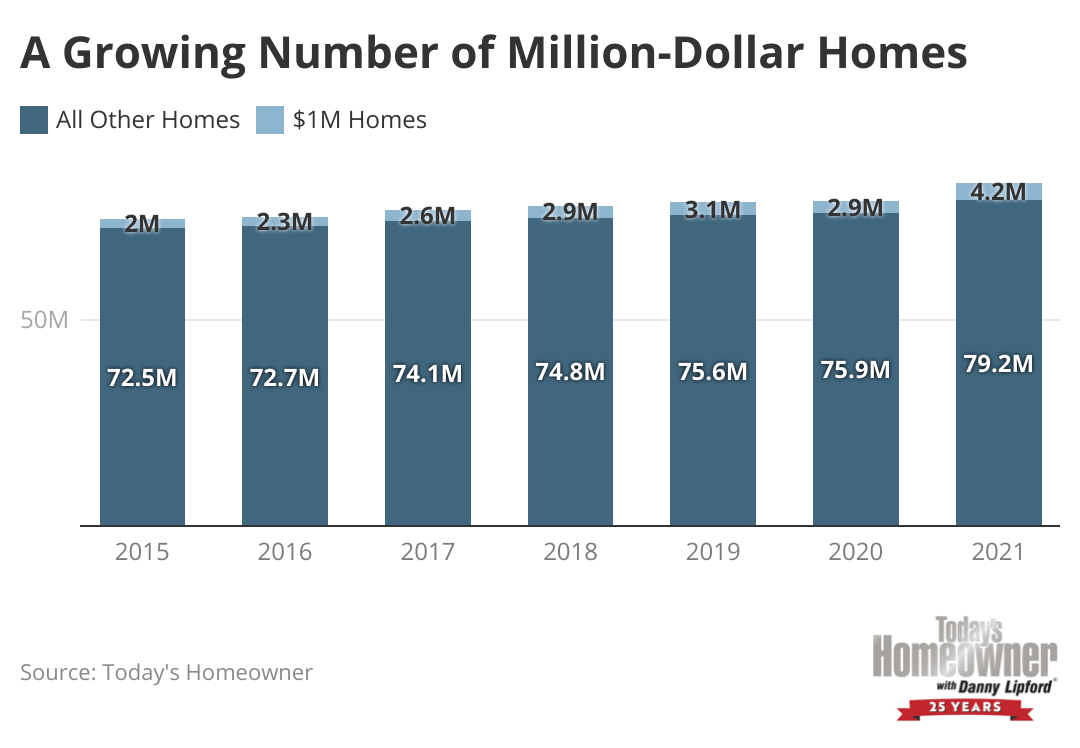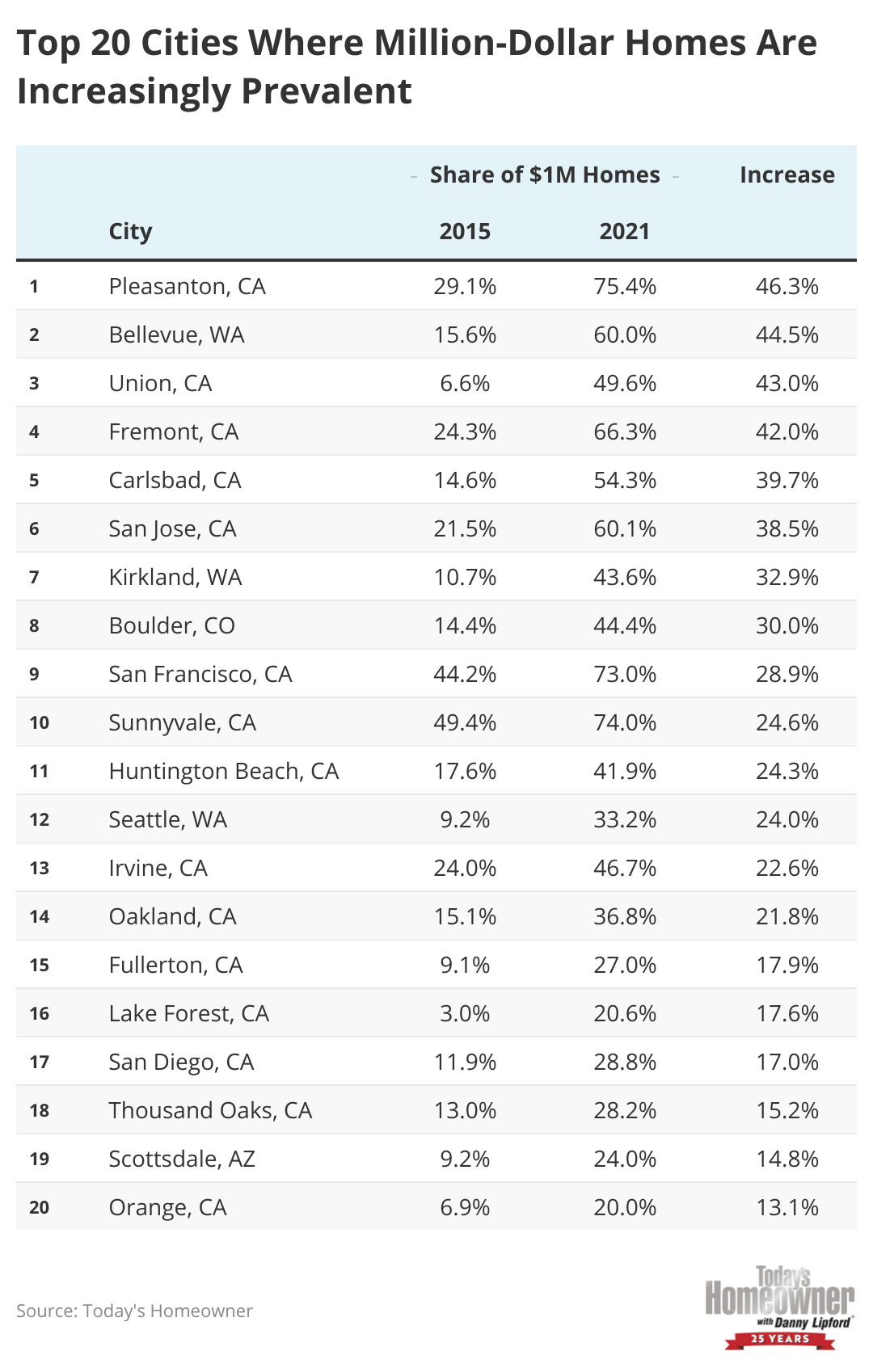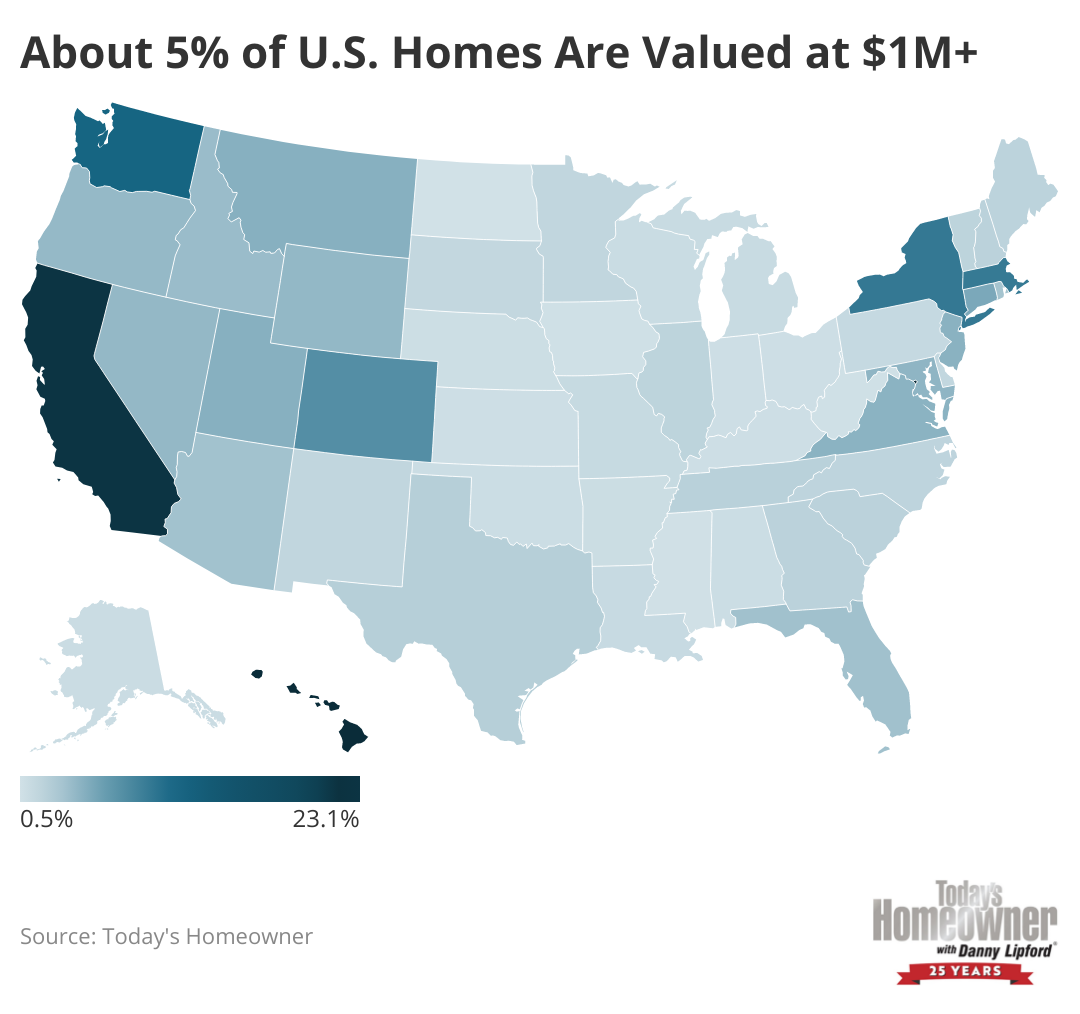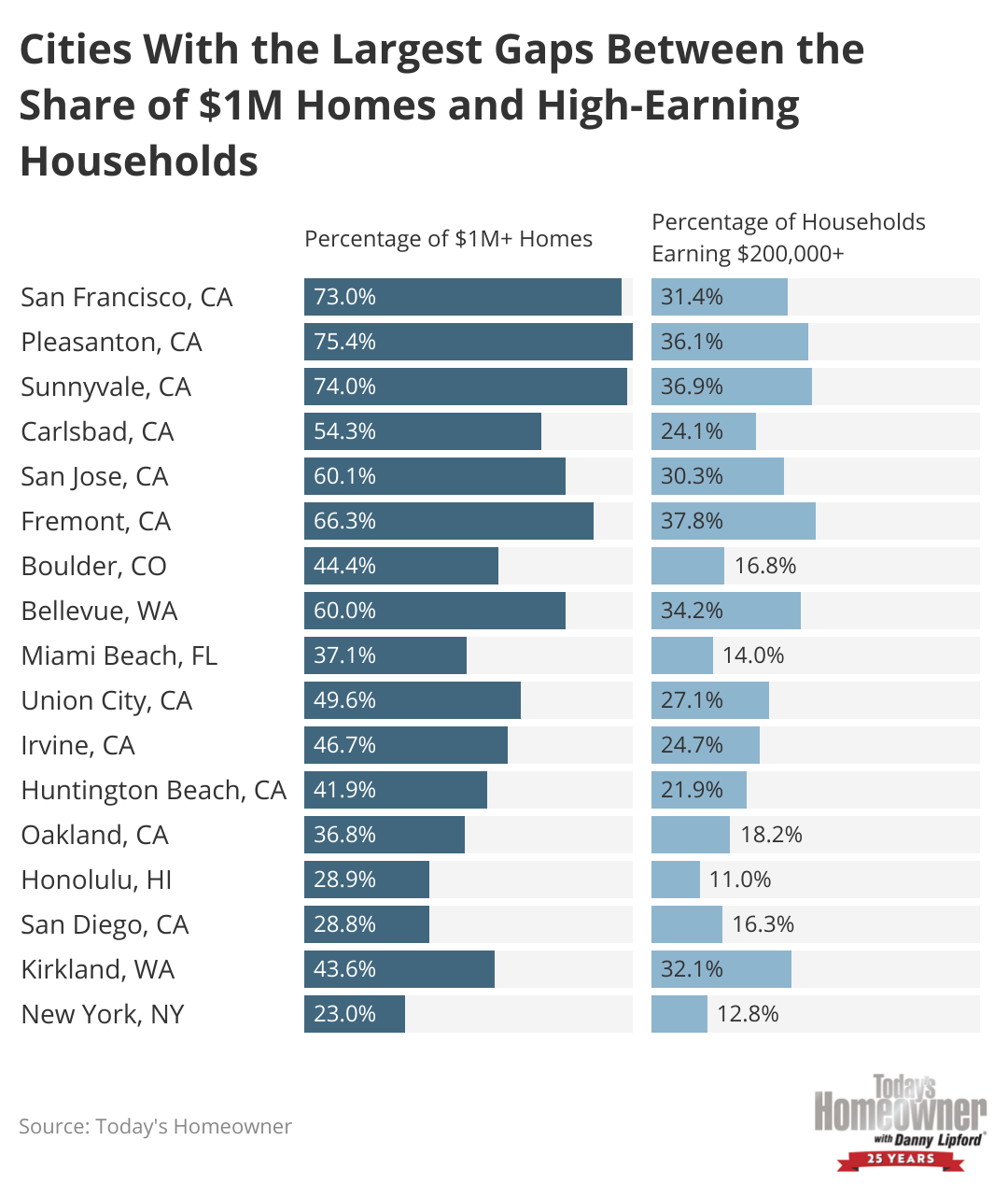There are more million-dollar homes in the U.S. than ever before. But can Americans afford them?

Canva
There are more million-dollar homes in the U.S. than ever before. But can Americans afford them?
A large brick home with immaculate topiaries and a pool in the foreground.
The U.S. housing market has been incredibly hot over the past several years, with demand significantly outpacing supply when it comes to the number of homes on the market. And despite high interest rates and inflation more recently, home prices haven’t dropped.
In fact, a growing share of U.S. homes is passing the million-dollar mark. Over the past several years, the number of million-dollar homes has more than doubled. And with that, recent Census Bureau data shows that more than 1 in 20 homes are valued at $1 million or higher.
With the number of million-dollar homes rising substantially, Today’s Homeowner took a closer look at the high-end housing market in the U.S. The study examined trends over the past several years, where the share of million-dollar homes is highest, gaps in affordability for these expensive homes, and expectations for the future.
Main Findings
- Nationwide, the number of million-dollar homes has more than doubled from 2015 to 2021.
- A staggering 73% of homes in San Francisco are worth more than $1 million, more than almost any other city in the country.
- At least a third of homes are valued at $1 million or more in 14 cities.
- In 17 cities, the difference between the share of million-dollar homes and the share of households that may be able to afford them exceeds 10%.
- There is overlap across cities with large increases in million-dollar homes and the widest affordability gaps.
![]()

Today’s Homeowner
A Growing Number of Million-Dollar Homes
Bar chart showing a growing number of million-dollar homes from 2015 to 2021.
Census data shows that in 2021, about 4.2 million homes in the U.S. were valued at $1 million or more. This figure has steadily increased over the past several years. In 2015, it stood at roughly 2 million homes.
The proportion of million-dollar homes in the U.S. has similarly almost doubled, rising from 2.7% in 2015 to 5% in 2021.
In 14 cities, the proportion of them has increased by more than 20 percentage points. Many of these metros are concentrated in the Pacific Northwest, including San Francisco, Seattle, and nearby cities.
Outside of California and Washington, Colorado’s Boulder also makes the list. The percentage of million-dollar homes in Boulder stood at 14.4% in 2015 but rose to 44.4% in 2021 — a difference of 30 percentage points.

Today’s Homeowner
Where Are the Most Million-Dollar Homes?
Table showing the top 20 cities where million-dollar homes are increasingly prevalent.
At the state level, million-dollar homes are most prevalent in California and Hawaii. In California, more than 23% of homes are worth a million dollars or more and in Hawaii, the share of million-dollar homes exceeds 22%.
Many of the cities with the highest share of million-dollar homes are also concentrated in California. With the previously discussed increases, the percentage of million-dollar homes exceeds 70% in three California cities: Pleasanton, Sunnyvale, and San Francisco.
In four additional cities, more than half of homes are worth $1 million or more. They include Fremont, San Jose, and Carlsbad in California, along with Bellevue, Washington. While about 60% of homes in Bellevue are million-dollar houses, the figure stands at about 33% in Seattle, its western neighbor.

Today’s Homeowner
Who Can Afford a Million-Dollar Home?
Map showing about 5% of U.S. homes are valued at $1 million or more.
The threshold to afford a million-dollar home varies depending on a person’s financial circumstances. For instance, an individual or couple may have a high annual income but a low amount saved for a down payment. Conversely, someone may have a large amount of money to put toward a down payment but a tighter monthly budget.
This study assumed a standard 20% down payment, which amounts to $200,000 on a million-dollar home. This means a new homeowner would have an outstanding mortgage balance of $800,000. While the Department of Housing and Urban Development (HUD) suggests that your annual housing payment does not exceed 30% of your pre-tax income, a more conservative estimate is 25%. In other words, the ratio between your mortgage and income should not be greater than four as a rule of thumb.
This means that assuming a 20% down payment, households purchasing a million-dollar home should earn upwards of $200,000 annually.

Today’s Homeowner
Discrepancies Between the Proportion of Million-Dollar Homes and High-Earning Households
Graphic showing a list of cities with the largest gaps between the share of $1 million homes and high-earning households.
Not surprisingly, the majority of American households do not make an annual income of $200,000 or more. As such, many cities show a significant difference between the proportion of million-dollar homes and the number of households that may be able to afford them.
This gap is highest in San Francisco, which is widely known for its unaffordable housing. Though 73% of the homes are valued at $1 million or more, less than 42% of households in the city earn $200,000 or more annually.
In an additional 16 cities, the difference between the share of million-dollar homes and the share of households that may be able to afford them exceeds 10%. Of those, only four are outside of California and Washington. They are: Boulder, Colorado; Miami Beach, Florida; Honolulu, Hawaii; and New York, New York.
Boulder’s Affordability Gap
Boulder’s gap between the percentage of million-dollar homes and the number of households that may be able to afford them is particularly interesting given recent increases in home values. In 2015, only 14.4% of homes were valued at $1 million or more, compared to 44.4% in 2021.
Though not everyone is currently looking to buy a home (and some homeowners may have seen a large return on investment on their previous home purchases given these increases), this bodes poorly for renters. The mismatch in affordability exceeds 27 percentage points or nearly three in 10 residents. Specifically, more than 44% of homes in Boulder are worth at least a million dollars, while less than 17% of households earn $200,000 or more annually.

Canva
Expect the Share of Million-Dollar Homes to Continue Growing
A white, modern mansion is illuminated from within in the evening.
Despite significant affordability gaps in several large cities, many experts only expect the share of million-dollar homes to grow. Jennifer Spinelli, founder and CEO of Niche Home Buyer in Albuquerque, New Mexico, says:
“Real estate experts are predicting a large increase in the number of million-dollar homes across the country. The trend is being driven by an influx of wealthy buyers looking to invest in luxury properties and a steady rise in property values in certain areas.”
This affects both buyers and sellers. Spinelli continues:
“Buyers may need to act quickly when they find a home they’re interested in and be prepared to pay more for it than they would have just a few years ago. On the other hand, this could open up an opportunity for sellers looking to cash out at higher prices.”
Methodology
Data for this report comes from the Census Bureau’s American Community Survey. To calculate the percentage of million-dollar homes, the researchers divided the number of million-dollar homes by the total number of owner-occupied housing units in each area. In total, the study considered 372 cities with available data.
This story originally appeared on Today’s Homeowner and has been independently reviewed to meet journalistic standards.
